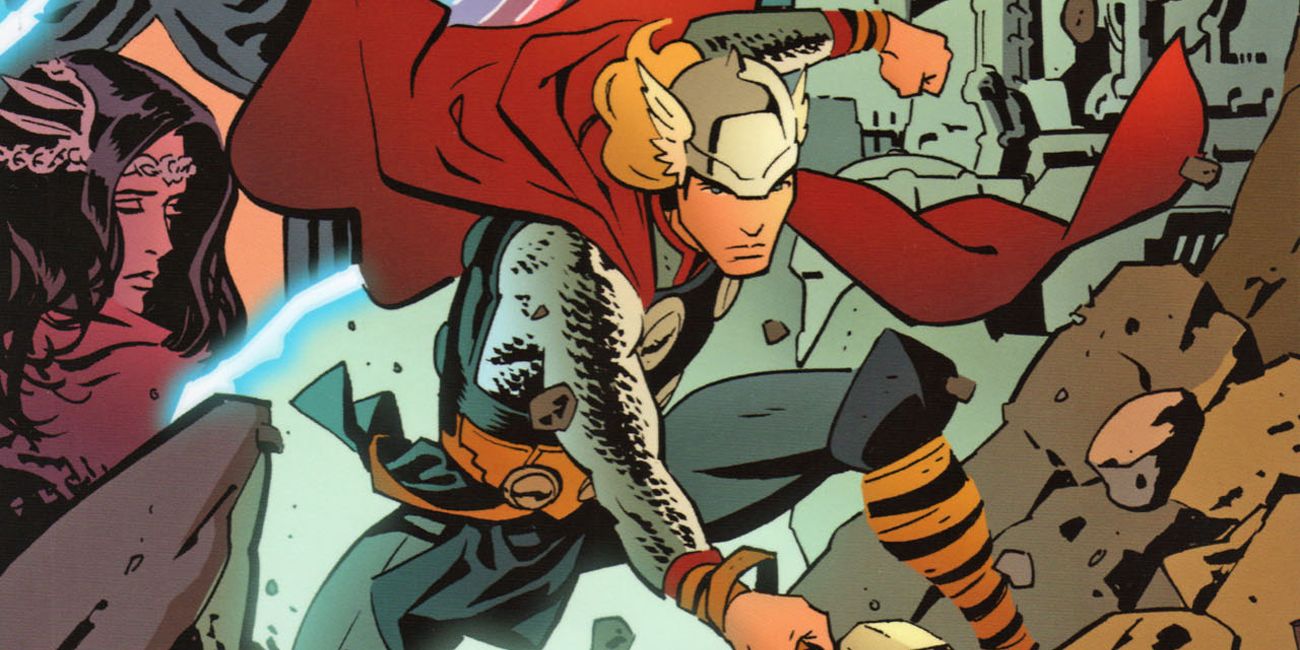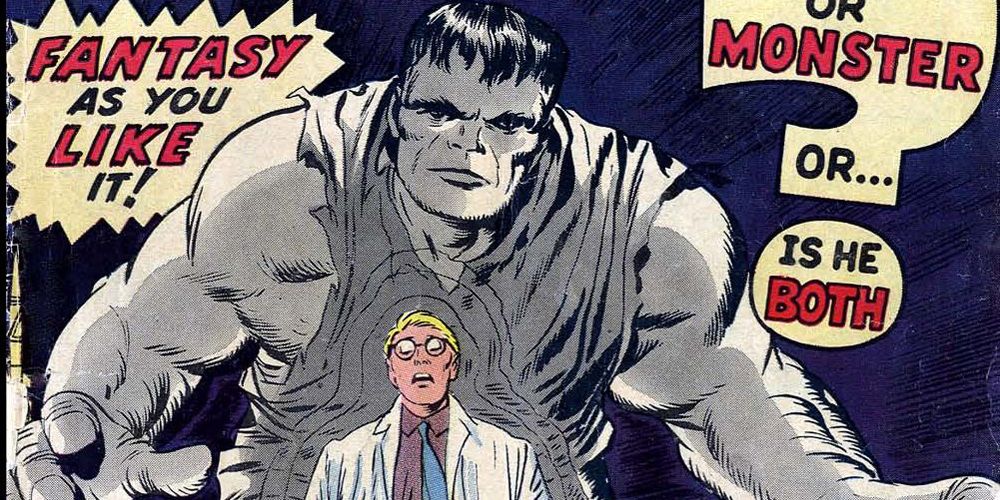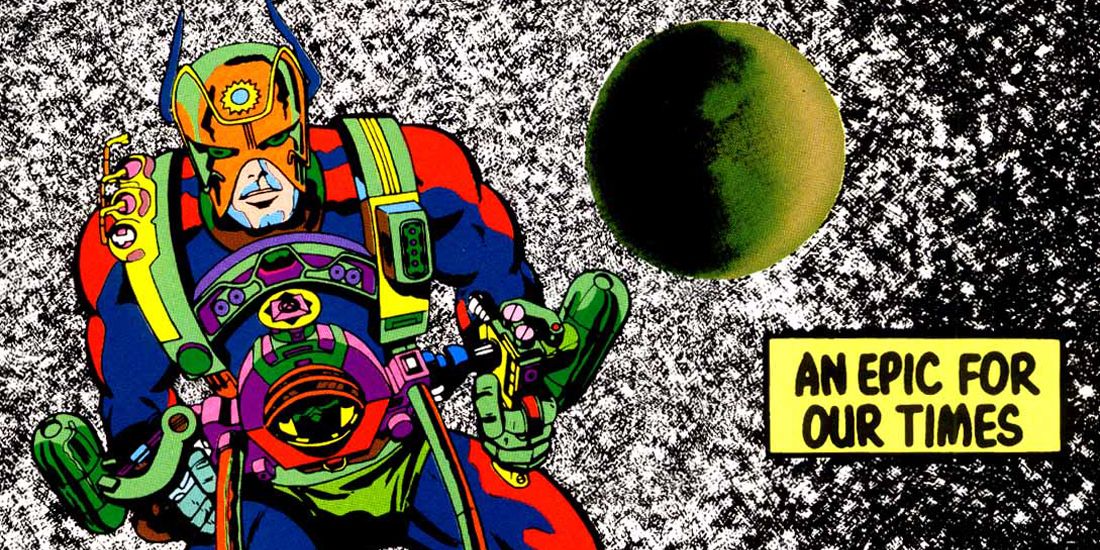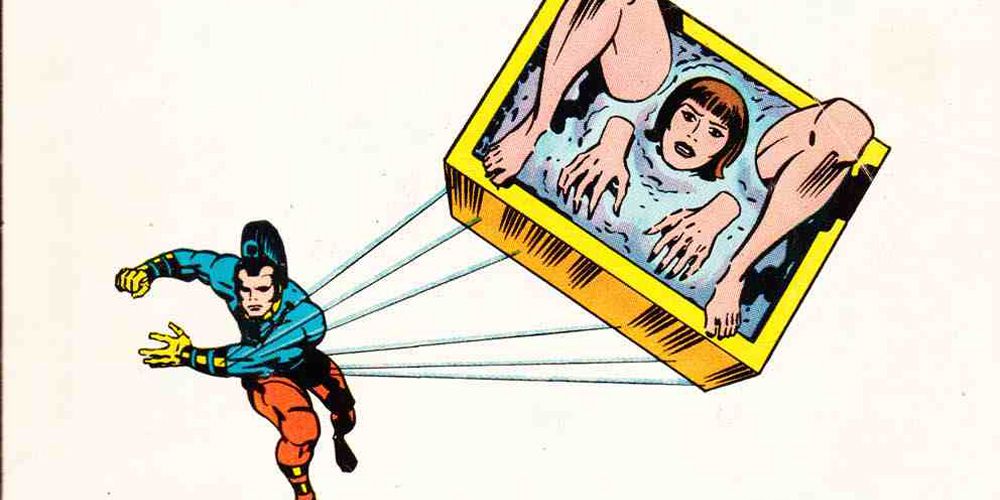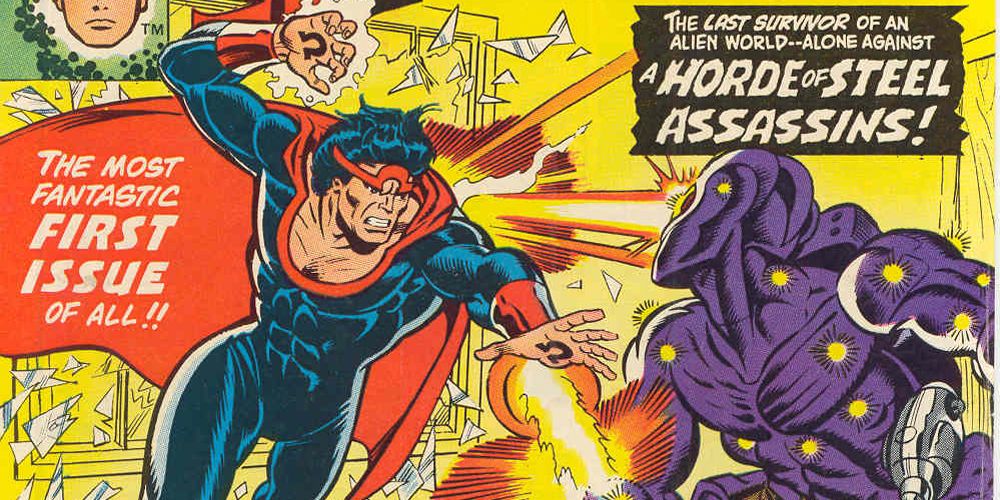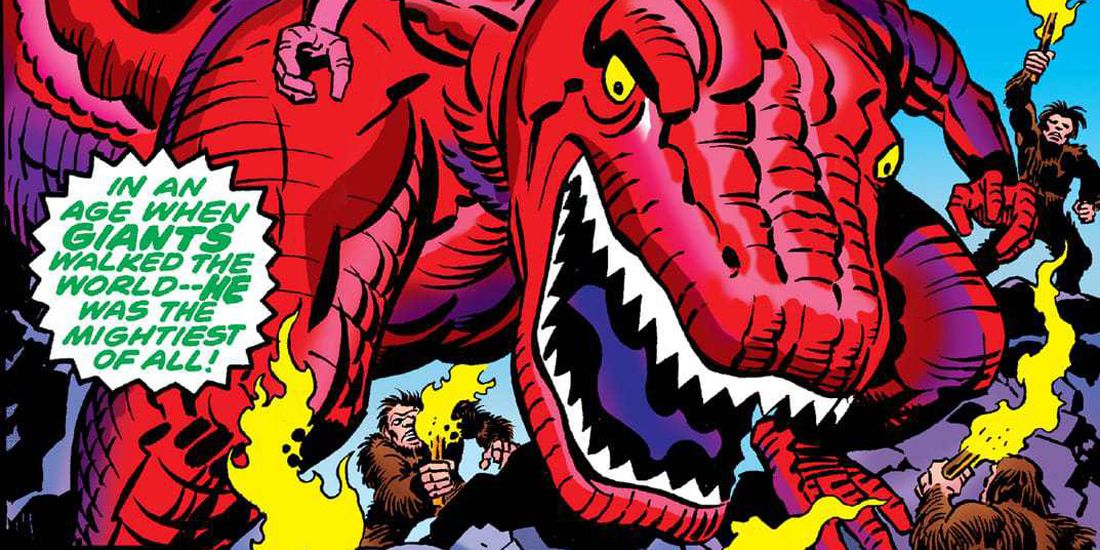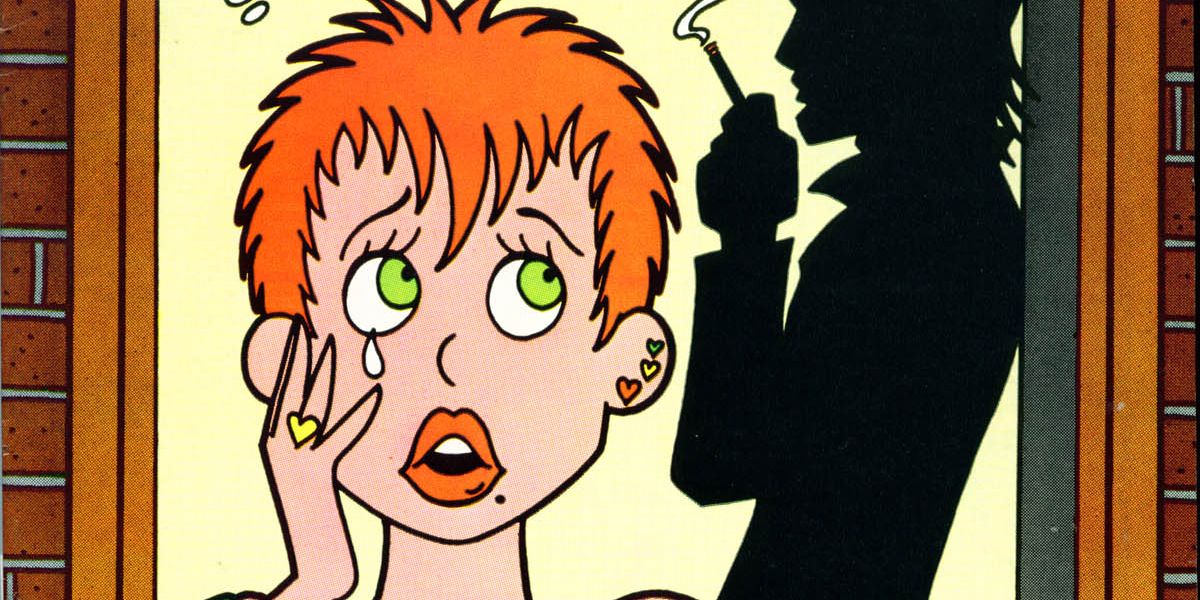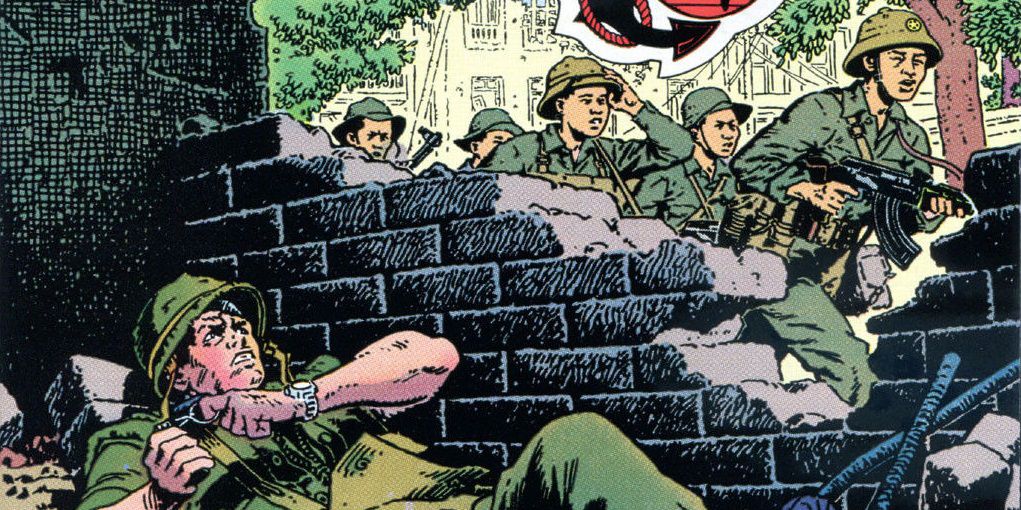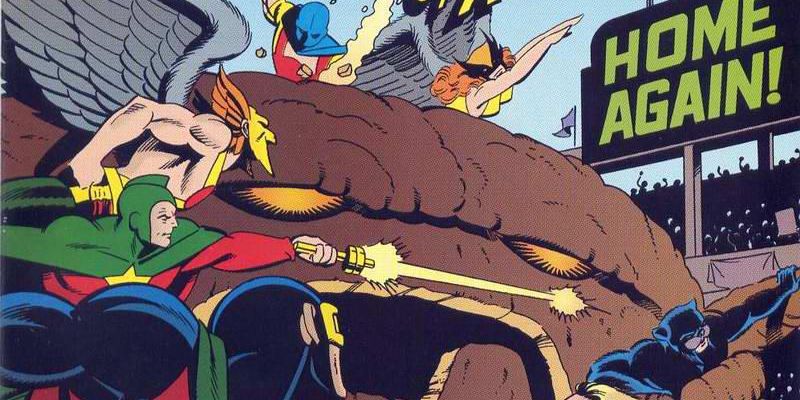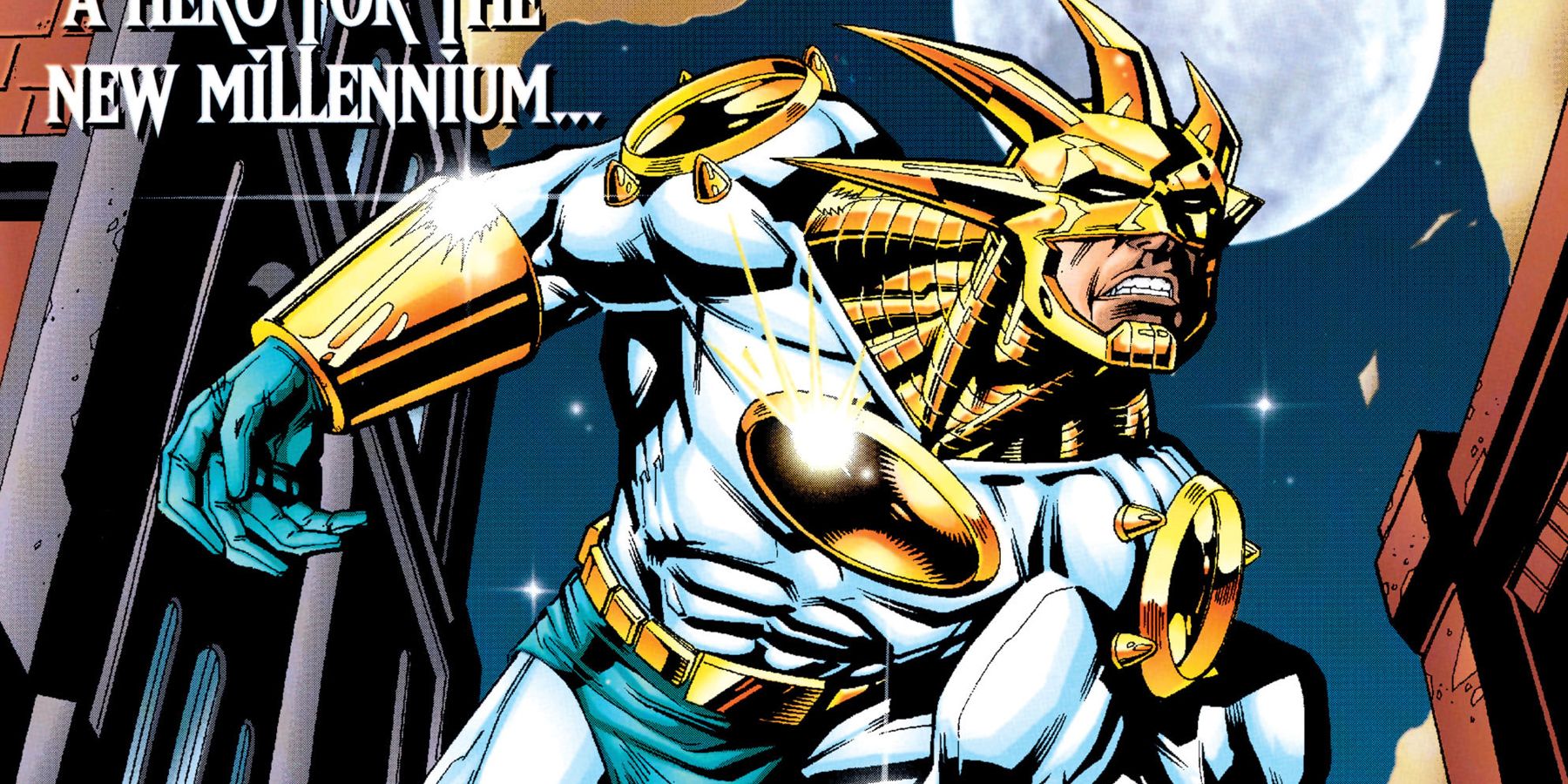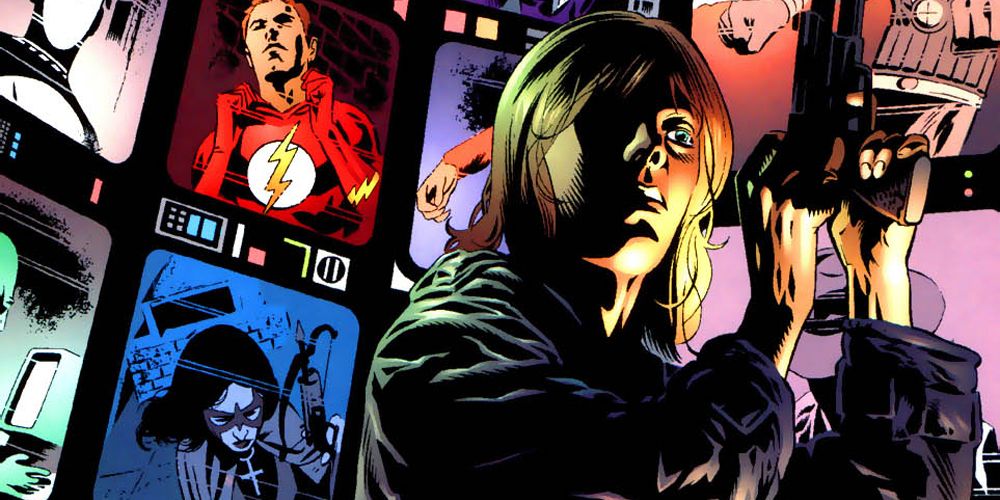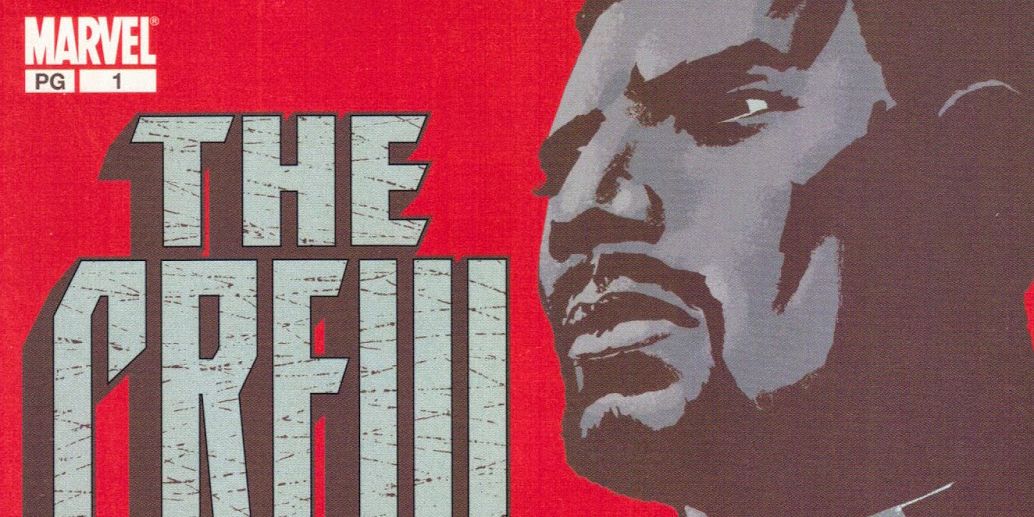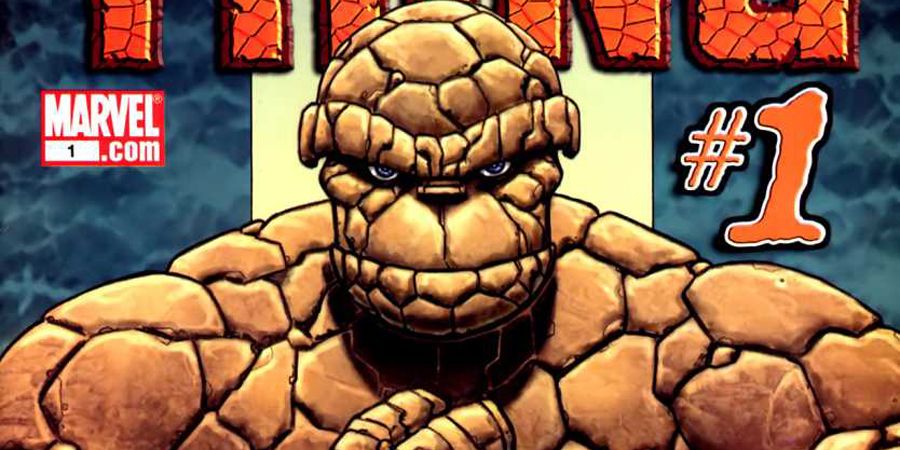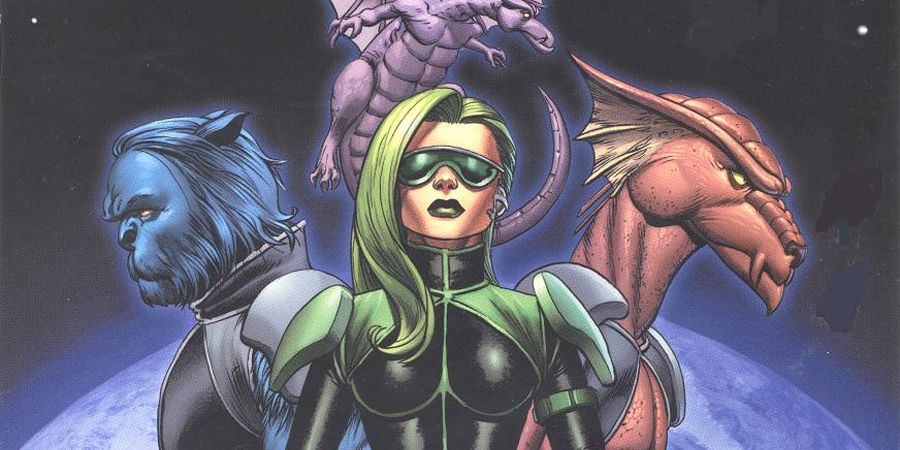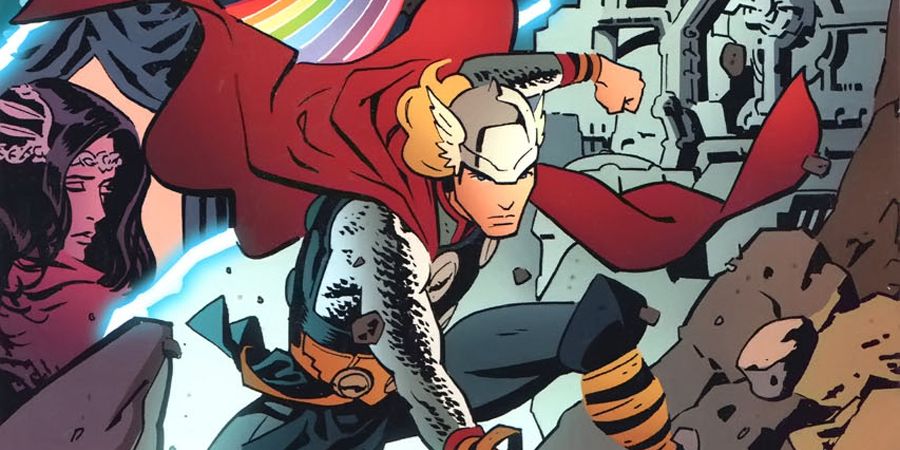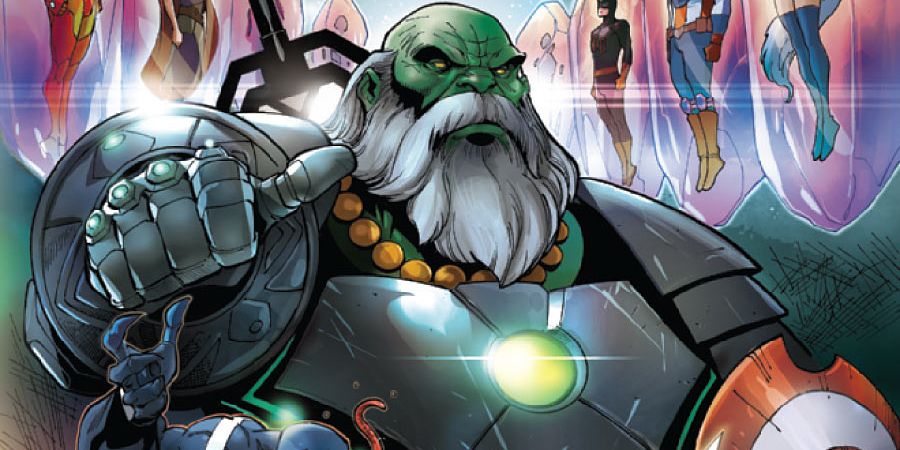One of the more prominent trends of the past decade or so in comic books is the increased amount of relaunches. Major titles will get canceled and restarted with new volumes seemingly any time anything changes in the title -- not just a new creative team, but a change in direction or perhaps just a crossover that has interrupted the volume. Of course, a new #1 clearly helps sales more than having a #16.
This was definitely not always the case. For years, if a book ended, it was because it wasn't selling well. For the most part, though, new titles were given at least a year's grace period before being canceled. That wasn't always the case -- sometimes comic book titles would be canceled within their first year.
The annoying thing is that very often these were not bad comic books, they just didn't appeal to a large enough market. In some cases, they clearly would have been a hit had they launched at a different point in time, making it just a matter of bad timing. So we're going to take a look at 15 great DC Comics and Marvel comic book series that did not even last a year (just DC and Marvel because they tend to have the capitol to keep books going longer than independent publishers, so it's more notable when they cancel a book early). We're not going to feature books that were quickly re-launched with new volumes or books that were interrupted by crossovers and then continued in new volumes following the crossover. (So, just to name three examples, no "Agents of Atlas", no "All-New Hawkeye" and no "Angela.") We're just talking books that were flat-out canceled before they could hit issue #12. We'll list them chronologically.
15 Incredible Hulk (Six issues between 1962-1963)
It seems hard to believe now, but "The Incredible Hulk"'s original series only lasted six issues before being canceled in early 1963. Created by Stan Lee and Jack Kirby, the series paired Kirby with a few different inkers over the first five issues (Paul Reinman, Steve Ditko and Dick Ayers) before Steve Ditko did the full art for the final issue. Much of the basics of what we now know about the Hulk were established in this first series (Army scientist Bruce Banner turns into the Hulk after saving Rick Jones from a Gamma Bomb blast, General Thunderbolt Ross hunts down the Hulk, not knowing that the Hulk is secretly Banner, the man his daughter loves), but a lot of it was also clearly determined on a hit or miss basis. The Hulk was initially gray, then green. Banner turned into the Hulk only at night. Wait, no! Banner is always Hulk, but he can control the Hulk! Wait, no! Banner has to use a gamma radiation machine to transform himself into Hulk! The series ended with Banner seemingly curing himself, but as we all know, cures for the Hulk never work. The Hulk became a founding Avenger soon after his series ended, but nearly two years would pass before the Hulk got his own regular feature again, in the pages of "Tales to Astonish."
14 New Gods (Eleven issues between 1970-1972)
Pretty early on in his tenure at DC Comics, Jack Kirby realized that he and DC Comics were not on the same page when it came to how to proceed with his "Fourth World" line of interconnected comic books, which starred the New Gods of New Genesis and Apokolips fighting against each other, with the Earth often caught in the middle of that struggle (the three titles were "New Gods", "Forever People" and "Mister Miracle"). Kirby was trying to do something that would expand beyond the standard newsstand delivery system of comics. He figured that his epic could be collected into books much like the way that the European market sold their comics in books called "albums." However, DC was not particularly interested in fostering Kirby's vision, and as a result, soon moved him to create other titles when his "Fourth World" books did not sell as well as DC had hoped (they were not selling poorly, but DC believed that they could get a better return on their investment in Kirby if he created other, non-connected titles). Thus, the flagship title of the "Fourth World", the "New Gods" did not even make it to #12. Years later, when DC reprinted "New Gods" in a special oversized miniseries with each issue containing two issues of "New Gods", they allowed Kirby to create the missing "twelfth" issue of "New Gods" to make the sixth issue of the reprint series complete. "Forever People" was also canceled by DC before hitting #12. Only "Mister Miracle" lasted past #12 (although, since the books were released bimonthly, the each lasted longer than a calendar year).
13 O.M.A.C. (Eight issues between 1974-1975)
In some ways, Jack Kirby was almost a victim of his own skills at DC Comics. Kirby had a contract with DC Comics where he would produce a large amount of content for them on a regular basis (15 pages of story and art a week!) and Kirby would constantly be creating new characters and new series for the company. Yet DC would have final say over which projects continued, and their approach was one of "OK, this didn't work, now try this." They had Kirby move on from his "Fourth World" concept and it was DC who directed Kirby to create the two titles that would have the most commercial success for him during his time at DC, the horror comic "The Demon" and the "Planet of the Apes" riff, "Kamandi, the Last Boy on Earth". When "The Demon" ended in 1974, Kirby was already considering returning to Marvel Comics when his initial five-year DC contract ran out the following year, but he had to keep up with his content requirements, so he came up with "O.M.A.C.," about a futuristic "one man army corps." The concept started when Kirby was at Marvel, when he came up with the idea of a future Captain America. The futuristic world of Buddy Blank, who found himself transformed into O.M.A.C. was a vibrant one, filled with outlandishly interesting ideas. Sadly, the book was a bit too out there, and it ended after just eight issues. By this time, Kirby was already on his way to Marvel.
12 Omega the Unknown (Ten issues between 1975-1977)
"Omega the Unknown" was an unlikely Marvel comic book series by writers Steve Gerber & Mary Skrenes and artist Jim Mooney. It starred an oddly mature 12-year-old boy named James-Michael who was on the way to New York City with his parents to enroll in public school after being home schooled his whole life. On the way to NYC, the car carrying James-Michael and his parents was forced off of the road. James-Michael was badly injured in the accident, but before he passed out and went into a coma, he discovered that his parents, seemingly killed in the crash, were actually robots! Meanwhile, Omega, an alien from a planet destroyed by mysterious androids, showed up on Earth. When one of the androids attacked James-Michael in his hospital bed, Omega showed up to defend him. However, James-Michael then defeated the android himself through strange energy blasts from his hands. James-Michael was then fostered by two young women, while Omega worked odd jobs in the city. They rarely interacted, as their stories took on their own paths, with James-Michael struggling with "real life" issues in high school and Omega fighting minor threats in the City. Omega, though, would always show up when James-Michael was in danger. It was a strange, but effective comic book. In the last issue, Omega was seemingly killed, and Gerber never got a chance to resolve the story. Jonathan Lethem and Farel Dalrymple did a maxiseries revival of "Omega the Unknown" in 2007.
11 Devil Dinosaur (Nine issues in 1978)
Even after returning to Marvel, Jack Kirby still had a bit of a hard time fitting in. Like DC, Kirby had a lot of freedom in choosing his assignments at Marvel, only this time, on top of creating new characters and titles, he was also writing and drawing established Marvel Universe characters, as he took over both "Captain America" and a re-launched "Black Panther" ongoing series. After a few years, though, he wasn't having much more success at Marvel than he was at DC. He was more and more looking at leaving comic books all together and working in animation instead. In 1978, when one of the original series he created for Marvel, "The Eternals" ended (as did "Black Panther"), Kirby needed to add a book to his schedule, as Marvel was also paying him to deliver a certain amount of content, just like DC. While Kirby was considering leaving Marvel for cartoons, Marvel was also trying to get into the world of animation, so they had Kirby come up with an idea for a cartoon that was sort of like Kamandi with dinosaurs. The idea was not picked up for a cartoon, but the comic book series designed to tie in with the would-be carton became "Devil Dinosaur". Without a cartoon to tie into, the series was very short-lived, but it was a great idea that many writers have returned to over the years, including the current "Moon Girl and Devil Dinosaur" series. Kirby left Marvel to work in animation soon after "Devil Dinosaur" ended.
10 Angel Love (Nine issues, including a special, between 1986-1987)
"Angel Love" was a daring comic by DC when it came out in 1986. Written and drawn by Barbara Slate (with inks by John Lopez), it had art that looked like an "Archie" comic, but had content that was not approved by the Comics Code. This was before DC had the Vertigo imprint designed for mature, off-kilter books -- this was just sent out to retailers along with the rest of DC's superhero titles. The story centered around Angel Love herself, a struggling artist in New York City who works as a waitress to make ends meet. One of the key points of satire in the series was the general New York City "scene of the mid-1980s. Angel shared an apartment with a rich ditzy wannabe actress. They lived in a building with a friend of theirs and, of course, a bunch of cockroaches. Bizarrely (but awesomely) we could hear the cockroaches talk! One of the biggest plot points of the early issues was Angel dealing with the fact that her boyfriend has a problem with cocaine. Slate handled it well without getting too preachy. DC nicely gave Slate an oversized special to wrap up a cliffhanger from the final issue of the series.
9 Semper Fi (Nine issues between 1988-1989)
Marvel had some unexpected success with their comic book series "The 'Nam", which was about the Vietnam War. Edited by actual Vietnam War veteran Larry Hama, "The 'Nam" was part of an attempt by Hama to do war comics at Marvel but from a more realistic angle. The success of "The 'Nam" led to Marvel releasing a second book called "Semper Fi", telling stories involving the United States Marine Corps. Vietnam War veteran Michael Palladino (a member of the Marine Corps) wrote the series. Each issue had two stories, a main story drawn by either legendary war comic veteran artist John Severin or Andy Kubert, the son of another legendary war comic artist, Joe Kubert (Severin inked Kubert's stories). The back-up story was drawn by longtime war comic artist Sam Glanzman (like Severin, a veteran of World War II). "Semper Fi" was a worthy companion to "The 'Nam", as it told thoughtful and poignant stories of war, with amazing art by Severin, Kubert and Glanzman.
8 Justice Society of America (Ten issues between 1992-1993)
After a number of years following "Crisis on Infinite Earths" where the Justice Society of America went missing, DC Comics brought them back in a 1991 miniseries written by Len Strazewski. This led to an ongoing series by Strazewski, with art by Mike Parobeck and Mike Machlan. The series showed the older heroes trying to re-adjust to life in the modern DC Universe. Part of them questioned their place in the world, but in the end, their sheer sense of camaraderie carried them through. Besides Parobeck's excellent artwork, the thing that stood out the most about this short-lived series was just how darn optimistic the whole thing was. This was a title that asked the question of whether these older heroes were leaving the world a better place, and the answer was yes. The series also introduced Jesse Chambers, the hero known as Jesse Quick (although it would take Mark Waid bringing her to the pages of "The Flash" to really make Jesse Quick stick). The overarching villain of the series was Kulak, an old Spectre foe who Hawkman and Hawkgirl accidentally unleashed upon the world.
7 Aztek the Ultimate Man (Ten issues between 1996-1997)
"Aztek: The Ultimate Man" was an off-beat series written by Grant Morrison and Mark Millar, with art by N. Steven Harris and Keith Champagne. It is hard to believe that a comic book written by two of the most popular comic book writers today couldn't even get 12 issues out of a series written together, but that was the case with Aztek, which told the story of a man trained by the mysterious Q Society (a group that ostensibly worshiped the Aztec god Quetzalcoatl) to fight the Aztec god Tezcatlipoca. In the meantime, he moved to Vanity City to take over the life of a deceased doctor. Hilariously enough, everyone knew he wasn't the dead doctor, since that, you know, wouldn't actually work. No one cared, though. Like another DC title of the time, "Starman" and its locale, Opal City, Vanity City was practically its own character, as it was filled with strange and interesting characters. Joker guest-starred in a particularly good two-part storyline. The series ended with Aztek joining the Justice League (whose title, "JLA," was written by Morrison at the time).
6 Chase (Ten issues in 1998)
DC Comics certainly tried to give Cameron Chase a chance, as she made her debut in an oversized issue of "Batman" before launching into her own series by D. Curtis Johnson, J.H. Williams and Mick Gray. Chase was an agent for the government agency Department of Extranormal Operations (DEO, created for this series), which monitored superhumans in case they determined that the superhumans caused a threat to national security, in which case the DEO would step in and neutralize the threat. Chase's father was a superhero himself, but he was murdered when Chase was a young girl and the experience scarred her for life, giving her an inherent distrust of superheroes. "Chase" was like "The X-Files" set in the DC Universe, with a charismatic and realistic lead character (and, rare for the time, a female lead). This series was where everyone really got to know the artwork of J.H. Williams III and Mick Gray, and when it ended prematurely (its ninth issue was its last regular issue, but it had a tenth issue that was a tie-in to the DC crossover "DC One Million," so it was "Chase" #1,000,000), they were snatched up by Wildstorm to work on "Promethea" with Alan Moore.
5 Crew (Seven issues in 2003)
Towards the end of his previous series, "Black Panther," Christopher Priest introduced Kasper Cole, a New York City police officer who takes over the identity of the Black Panther to help further his career in the New York Police Department. He ended up getting involved trying to take down a specific gang. Along the way, he gained powers similar to the Black Panther and took on the identity of White Tiger. His story continued in the series "The Crew", which was about Cole and three other men who found themselves at war with the same gang that Cole was fighting. The other three men were James Rhodes, the former War Machine, Junta, a freelance intelligence agent who had also debuted during Priest's "Black Panther" run and Josiah X, the son of Isaiah Bradley (the black hero who was part of an experiment to replicate Captain America's Super Soldier Serum). Drawn beautifully by Joe Bennett, Priest spent the initial arc spotlighting each individual member of the new team as they each came into the situation that led to the formation of "The Crew." However, by the time they actually were together, the book was already over.
4 The Thing (Eight issues between 2005-2006)
Dan Slott and Andrea DiVito combined for the delightful "Thing" ongoing series in 2005, which spun out of a plotline in J. Michael Straczynski's "Fantastic Four" run that revealed that Ben Grimm was actually a very wealthy man thanks to his share of Fantastic Four Industries. He used his newfound wealth in hilarious ways in the early issues of the series. Slott used the entire Marvel Universe as his landscape, mixing and matching in characters to play off of the Thing. The most famous issue of this series was its final one, which came after Kieron Dwyer had taken over art duties on the series. It took the long-running gag of the Thing having floating poker games with his fellow superheroes and turning it into a giant superhero poker tournament, with nearly the entire Marvel Universe making an appearance. Like Slott's other work at around the same time ("She-Hulk," "Great Lakes Avengers," "Spider-Man/Human Torch"), this showed the writer's great sense of fun and his wonderful way of using the best of the entire Marvel Universe to make his stories stand out.
3 S.W.O.R.D. (Five issues between 2009-2010)
Spinning out of the pages of Joss Whedon and John Cassaday's "Astonishing X-Men" (albeit a number of years later), "S.W.O.R.D." told the story of the branch of S.H.I.E.L.D. led by Abigail Brand that protected the Earth from alien invasions atop their space station known as The Peak. When the series came out, however, Norman Osborn was in charge of S.H.I.E.L.D. and S.W.O.R.D. had just failed to protect the Earth from the Skrull invasion of "Secret Invasion", so things weren't going too well for Brand. In the opening (and, as it turned out, closing) arc of the series by writer Kieron Gillen and artists Steve Sanders and Craig Yeung, Brand fought to keep Henry Gyrich from taking control of S.W.O.R.D. and deporting all of the aliens on Earth. Gillen did great work developing the complex web of politics and action that Brand had to maneuver through to keep her job (and thus, both aliens and the Earth) safe. Kitty Pryde's alien dragon, Lockheed, was a standout supporting cast member in the series.
2 Thor: The Mighty Avenger (Eight issues between 2010-2011)
Released in advance of the film debut of Thor and Jane Foster in Marvel Studios' first "Thor" film, the series "Thor: The Mighty Avenger" was intended to be an out of continuity series that would appeal to filmgoers who might not want to read a comic book steeped in decades of comic book continuity. Written by Roger Langridge and drawn by Chris Samnee, the series took an in-depth look at the relationship between Thor and Jane, with Langridge doing an especially strong job developing Jane's character. The series was an all-ages book, but it was an all-ages comic that truly lived up to that description. Yes, kids could easily read the comic, but adults would love it just as much. It guest-starred many of Thor's superhero allies, and each one of them was designed as almost the ideal version of that hero. The Marvel Universe, as seen through the lenses of "Thor: The Mighty Avenger," was a wonderful place to live. Chris Samnee's artwork was out of this world. Just outstanding.
1 Contest of Champions (Ten issues between 2015-2016)
Written by Al Ewing and drawn by first Paco Medina and Juan Vlasco and later by Rhoald Marcellius, "Contest of Champions" was technically a comic book adaptation of the video game of the same name, which pitted Marvel heroes and villains against each other. However, while that concept might not sound all that appealing, Ewing made it work by using the freedom he had to choose "players" in the contest by bringing in and then developing a number of underdeveloped characters from Marvel's past, like Outlaw (the Black British Punisher), Punisher 2099 and, most importantly, Night Thrasher, who Ewing brought back from the dead and then made sure that everyone understood just how awesome the idea of a brilliant millionaire who fights crime with a skateboard is. Besides developing older characters, since the entire Multiverse was at his disposal, Ewing had the freedom to go nuts with some of the different takes on characters he could use, like a Venom who had eaten Peter Parker or a world where Iron Man used the Reality Gem to keep altering the events of Civil War. It was a delightful trip through the Marvel Universe and everyone was left in a better place than when Ewing started, which is more than most comic book titles can say.
What was your favorite comic book title that didn't even reach 12 issues?

